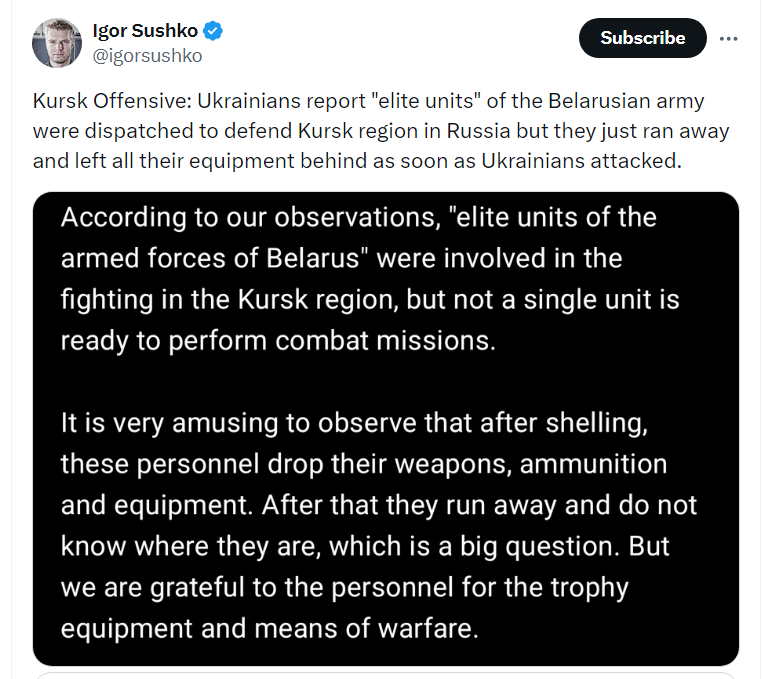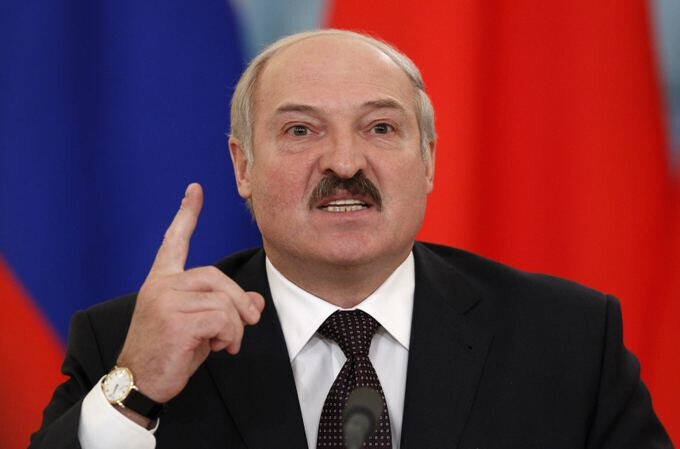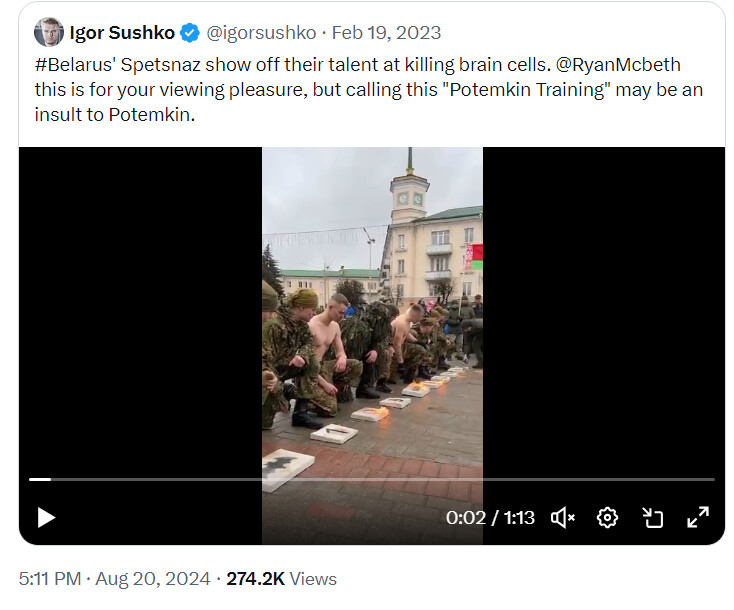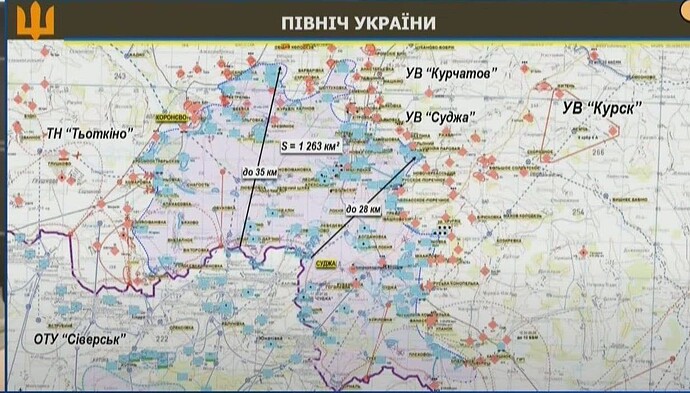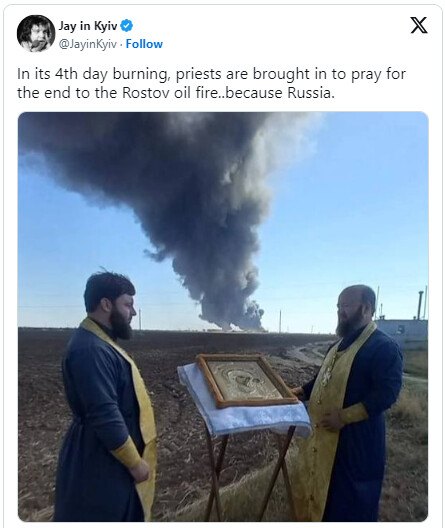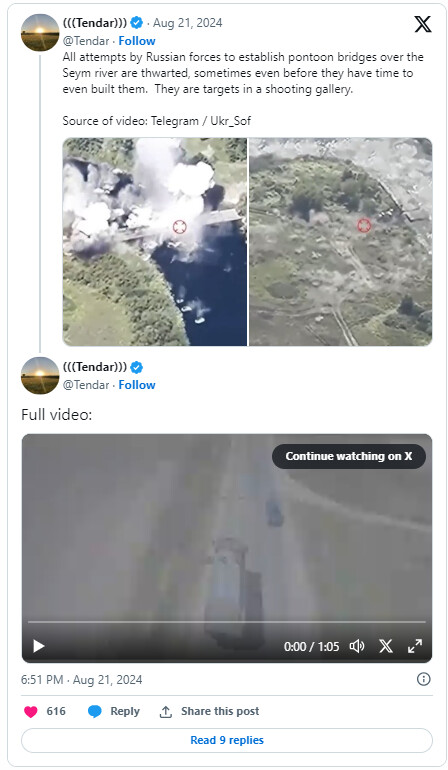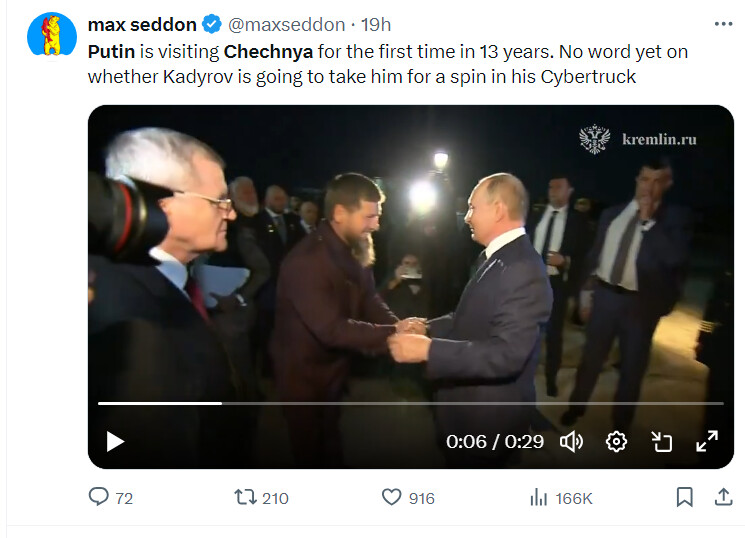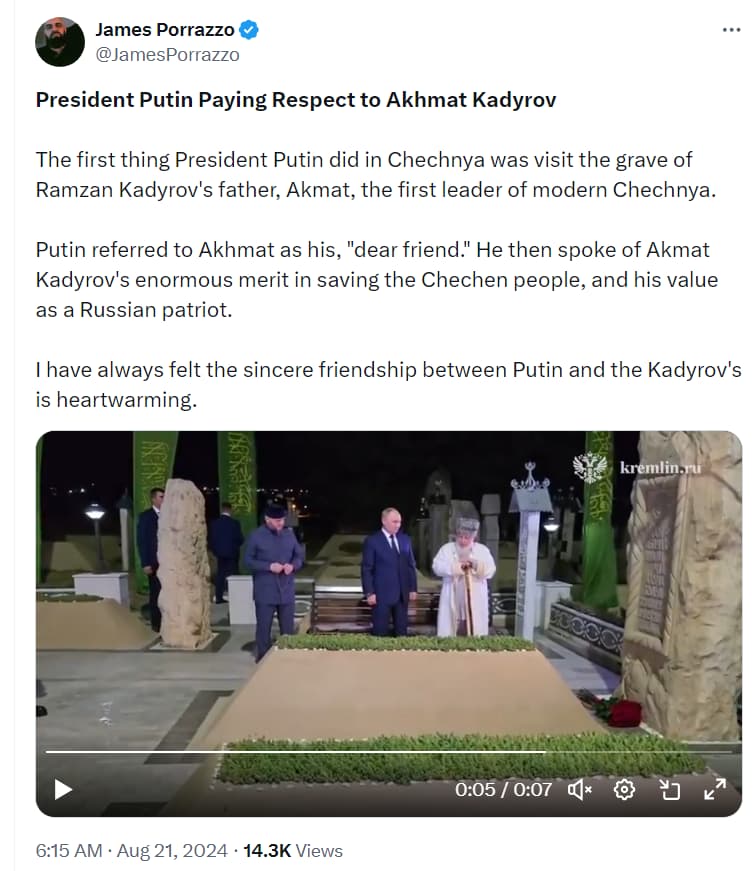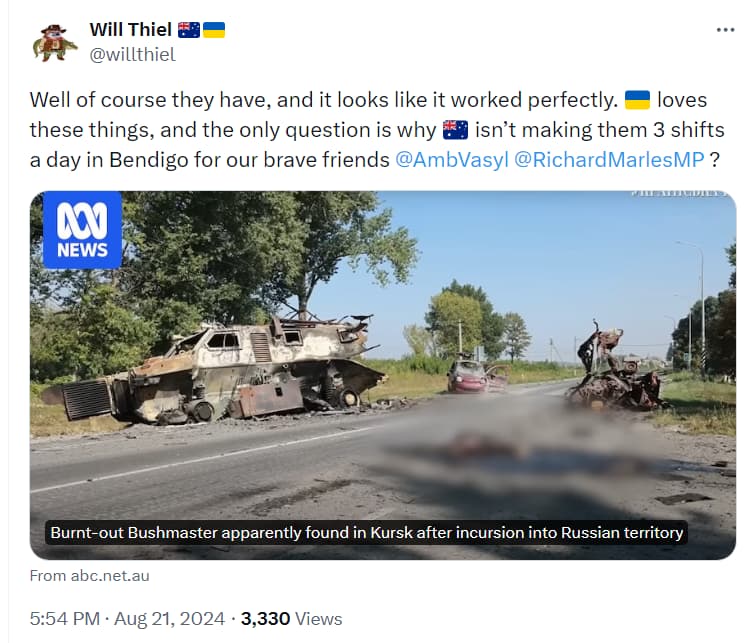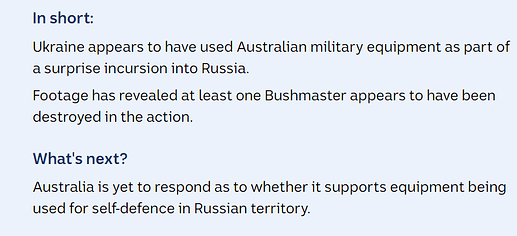UA staying a couple of decent sized steps ahead of the RUAF. RU moving deck chairs around, and making up troop numbers reminds me of Adolf who did the same when he was losing. Moving naval units out of Crimea weakens the defences of a key target. Now those same naval units have been defeated in the Kursk region, they can’t be moved back to defend the port area of any remaining warships. Then again, since their navy has been so foolish as to lose their warships to a country without a navy, their sailors need to be moved somewhere in order to earn their near worthless rubles.
This report reminds me of Sir Robin from The Life of Brian, elite at running away.

This is what many people find hard to understand: separating the reality from the “branding”. Where that branding is usually imposed by outsiders with vested interests.
What a silly argument.
Russia/USSR whatever were led by the Communist Party…so they were self proclaimed Communists.
That is just a semantics argument. It doesn’t matter if the characterization of the U.S.S.R.'s socio-economic organization and political Ideology was misbranded as “Communist” whereas in reality it was really Imperfect Communist/Socialist/Command economics mixed with Authoritarianist/Fascist/whatever it really was. As long as the misbranders are referring to the thing that is the U.S.S.R.'s brand of politics and anybody who gets that message is also referring to the same thing, everybody is on the same page as to what that thing is no matter what term towards that thing is used.
See also “That which we call a rose/ By any other name would smell just as sweet”
True, but if one dictator wraps himself in a flag, then another, and a few more… you tend to associate them as one[quote=“Albert_Thurgood, post:889, topic:33120, full:true”]
This is what many people find hard to understand: separating the reality from the “branding”. Where that branding is usually imposed by outsiders with vested interests.
[/quote]
Talking of red lines… The Yanks truly are chickenshit on their supposed military help and their perception of Puck Futin’s response to the use of their supplied weapons. With allies like the US, who needs enemies?
Ukraine pushes for long-range strikes as troops advance in Russia
BY BRAD DRESS - 08/21/24 6:00 AM ET
The Ukrainian advance into Russia’s Kursk region has put renewed pressure on the U.S. to lift a policy that restricts Kyiv from using American-made weapons to strike deep into Russian territory.
The restriction, if lifted, could help Ukraine advance further into Kursk and hold the territory that troops have gained by using long-range artillery like the Army Tactical Missile System (ATACMS) to hit airfields and logistical hubs.
The Kursk advance has also shattered a Kremlin message — that advancing and attacking inside of Russia is a red line and an escalation — threats that have long held the U.S. back from approving long-range strike capabilities.
Russia has not responded to the Kursk attack with any new escalation of its own, leading Ukrainians to push for the lifting of the long-range strike restriction.
Steven Horrell, a nonresident senior fellow at the Center for European Policy Analysis, said one potential objective of the Kursk attack is to prove there are no more red lines in the war. He argued the U.S. should lift the restriction.
“The fact that we’ve put handcuffs on Ukraine’s use of the capabilities we’ve given to them has been just a product of us being overly cautious,” he said. “We say as long as it takes [but] we just sort of trickle capabilities to them. ‘OK, we’ll let you defend yourselves. We’ll save a few lives, but we’re afraid [of escalation].’ It’s very much intertwined with this excessive fear of escalation.”
Surprise offensive
The push into Kursk is part of a wide-ranging surprise offensive intended to divert Russian troops from the front lines of eastern Ukraine, create a buffer zone to protect against border attacks and to destroy military assets, while taking prisoners and territory for potential exchanges.
Ukrainian troops caught Russia by surprise in the lightning Aug. 6 attack, and they continue to advance, taking some 500 square miles of territory and capturing 92 settlements, including the key town of Sudzha, last week. They have also destroyed at least three bridges over the Seym River that will cripple Russian efforts to resupply and reinforce.
But Ukrainian forces struggle against Russia’s precision-guided glide bombs, and officials argue it is vital to lift all restrictions on the use of weapons to protect troops from air attacks. Lifting the restrictions could also prevent Russian reserve forces from reinforcing positions in Kursk.
Ukrainian President Volodymyr Zelensky said in a Monday speech that long-range strikes were also instrumental in beating back Russian advances across a 600-mile front, most recently around the towns of Pokrovsk and Toretsk in the Donetsk region.
“We need sufficient range to defend Ukraine from Russian missiles and guided aerial bombs, to prevent the transfer of Russian troops, and to counter the occupier’s pressure on key front lines,” he said. “Ukraine is separated from halting the advance of the Russian army on the front by only one decision we await from our partners: the decision on long-range capabilities.”
Zelensky also said if the restriction were lifted, his troops might not even need to advance into Russia to establish a buffer zone free of Russian weapons that can attack into Ukraine.
Maksym Skrypchenko, president of the Transatlantic Dialogue Center think tank, which advises Kyiv, said Ukraine needs the ability to protect against glide bombs and secure artillery units with ATACMS, which can target fighter jets and ballistic missile launch areas.
“The fact that they are advancing [in Kursk] doesn’t mean that they are not being bombed like every minute,” he said. “We need, again, to push the Russian aviation and missiles away from the Ukrainian troops there.”
Skrypchenko said ATACMS hitting deeper into Russia could also “eliminate problems for the civilian population in Ukraine” by taking out Russian capabilities.
The U.S. has not budged. Pentagon press secretary Maj. Gen. Pat Ryder reiterated Tuesday that the policy stands.
“Conducting counterfire, defensive operations across the border is permitted, and I’ll just leave it at that,” Ryder said.
On Capitol Hill, however, some lawmakers are also renewing a push to get the U.S. to reverse the policy.
Rep. Mike Turner (R-Ohio), chair of the House Intelligence Committee, said lifting the restriction was important to counter Russia’s advantage with mass on the battlefield, such as with artillery.
“Ukraine is finally in a position where they can hold Russia accountable,” he told CBS on Sunday, and lifting restrictions “can change the dynamic on the ground.”
Changed tunes
The Biden administration has changed tunes on several policies before, including providing Ukraine with weapons like ATACMS that were previously viewed as escalatory.
In May, after Russia launched a major offensive in Ukraine’s northeastern Kharkiv province, Washington gave Kyiv permission to strike into Russian territory so long as the move related to a crossborder attack.
But the U.S. is hesitant to allow Ukraine to strike deeper into Russia, which would ostensibly give Kyiv the ability to hit Moscow.
Robert Murrett, a retired U.S. vice admiral, said Ukraine “almost exclusively” goes after military targets rather than political ones.
“As long as you’re going after legitimate military targets, there’s kind of a recognition that those are not viewed as escalatory,” said Murrett, now a professor at Syracuse University.
Russian President Vladimir Putin has laid out multiple red lines that have already been crossed, and it’s unlikely he can escalate the war any further on the battlefield outside of nuclear weapons, which carry enormous political risk for Moscow if deployed.
Zelensky said Monday that Putin has no options left to escalate and the Kursk offensive has proved “there is no single rational reason to deny us true power, true long-range capabilities.”
“We are now witnessing a significant ideological shift,” he said, “namely, the whole naive, illusory concept of so-called red lines regarding Russia, which dominated the assessment of the war by some partners, has crumbled these days somewhere near Sudzha.”
Dmytro Zhmailo, executive director of the Ukrainian Security and Cooperation Center, said the “threat of escalation has actually no basis,” and that view has been reinforced by Ukrainian military intelligence.
Zhmailo added that the U.S. would likely lift the restriction eventually but potentially far too late for Kyiv’s hopes.
“We don’t have time because every day we pay a big price for this war,” he said. “We, of course, want to see it sooner than later.”
Ukraine has already hit Moscow, and attacked the Kremlin, with drones. Some of its long-range drones have been employed with savvy use, hitting targets like oil depots hundreds of miles within Russia.
But ATACMS are much more powerful and precise, said Emil Kastehelmi, an analyst at the Finnish-based Black Bird Group.
“Drones aren’t really a substitute for the missile,” he said. “It’s more difficult … for the Russian air defense to actually do anything about these missiles.”
Even if the restriction were lifted, some of Ukraine’s larger goals rely on other factors.
Kastehelmi explained Ukraine is unlikely to advance much deeper into Kursk without a larger force, and Russia likely won’t divert enough troops from the front lines to make a difference.
“There’s no single weapon system that could decisively shift the battlefield,” he said.
The U.S., the de facto leader of a group of some 50 nations supporting Ukraine, appears to have also influenced other nations from not allowing Ukraine to use their weapons systems to strike deep into Russia.
British newspapers reported that the U.K. was waiting for approval from the U.S. before allowing its long-range Storm Shadow missiles to be fired deeper into Russia.
Other nations such as Germany and France are also holding back, though Berlin has yet to even provide its long-range Taurus missiles.
The U.S. has paved the way for other nations to lift restrictions before, including when it provided Abrams tanks to Ukraine in early 2023, which gave Germany the green light to send its Leopards.
Horrell, of the Center for European Policy Analysis, said Western leaders are looking at “U.S. hesitancy and feeding their own hesitancy.”
“The U.S. restrictions absolutely feed into other nations moving slowly or half-stepping or matching our restrictions with their own,” he said. “U.S. restrictions, U.S. hesitancy, U.S. excessive fear of escalation, is contagious within NATO.”
https://thehill.com/policy/defense/4837688-ukraine-advance-kursk-restriction/
The most flag-wrapping wannabe dictator in the world right now is this bloke:
Who also happens to be Putin’s most valuable asset in the West.
Who incorrectly calls any opponent a “Communist”.
Russia and America…if they’re both not threatening the world with their weaponry, they’re engaging in competitions to prove which of them are the stupidest people on the planet
We haven’t publicly seen a Bushamster since last year. This one met its end inside russia.
Aunty is worried the Ukrainians didn’t ask us for permission.
Ukrainian forces are believed to have used Australian-supplied Bushmasters as part of their recent surprise incursion into Russia, with evidence emerging of at least one of the armoured vehicles apparently destroyed inside the western border region of Kursk.
Just days after British-supplied tanks were reported to have crossed over the Russian border, video has been broadcast on Ukrainian television showing the wreckage of a Victorian-made Bushmaster on the side of a road.
Moscow declared a state of emergency after Ukraine’s daring military incursion launched on August 6, which President Volodymyr Zelenskyy says was aimed at creating a buffer zone to prevent further Russian attacks across the border.
This month’s surprise attack by Ukraine is Kyiv’s largest cross-border assault since the start of the full-scale conflict, which has seen Russian territory under occupation for the first time since World War II.
Retired Australian Army General Mick Ryan says he’s confirmed that Australian-supplied Bushmasters took part in the Ukrainian operation, which has forced more than 100,000 locals to flee.
“The Australian Bushmasters serve with one of the brigades that has apparently taken part in at least the initial phases, probably follow up phases of the Ukrainian operation in Kursk,” he told the ABC’s Afternoon Briefing program.
“These are excellent vehicles. There’s a reason why the Ukrainians like them and use them because they protect their soldiers. They’ve lost at least one, potentially two or three so far in this operation, it would be nice to see some replacements on their way.”
Marles unveils $100m support package for Ukraine
Photo shows A Bushmaster sporting Ukrainian flags stands in front of a Globemaster airplane on the tarmac
Defence Minister Richard Marles visits Ukraine, revealing Australia will provide the besieged country with another support package to aid its defence against Russia.
An overnight report broadcast by news outlet Ukrainian Pravda shows the Bushmaster burnt down to its hull, but Major-General Ryan said it was unclear whether the occupants managed to escape the heavily protected vehicle alive.
An investigation by ABC News Verify has verified the vision of the destroyed Australian supplied Bushmaster was recorded in the Kursk region, just north of the town of Sudzha in the administrative centre of Sudzhansky District.
“It’s hard to know whether that was a catastrophic loss and it happened straight away or whether it’s just burnt for some time afterwards once the soldiers have evacuated from the vehicle.”
The Australian government and Department of Defence are so far declining to comment on the report, but last week the UK’s defence ministry declared Ukraine had a “clear right” to use UK-supplied weapons for self-defence, and “that does not preclude operations inside Russia”.
To date, Australia’s military support to Ukraine has included at least 120 Bushmaster protected mobility vehicles, which are produced by French-owned defence manufacturer Thales at its facility in Bendigo, Victoria.
Since Ukraine’s recent advance into Russian territory, sightings of western-supplied armour have included US Bradley and Stryker armoured vehicles, German Marders as well as UK-donated Challenger 2 tanks.
This article envisions Russia and Ukraine fighting to a standstill, until all available resources are maxed out.
Pentagon says Russia’s war against Ukraine heads to dead end – Bloomberg
IRYNA BALACHUK, IRYNA KUTIELIEVA — WEDNESDAY, 21 AUGUST 2024, 11:07
The Pentagon’s Defense Intelligence Agency believes that Ukraine and Russia do not have sufficient military resources to conduct major offensive operations, which may indicate that both sides are heading towards a stalemate.
Source: European Pravda with reference to Bloomberg, which cites the assessments of the Pentagon’s Defense Intelligence Agency
Details: It is reported that Ukraine still does not have enough ammunition to match Russia’s ability to fire about 10,000 artillery rounds a day, even after the US Congress unblocked new military aid in April.
The Pentagon also notes that the Ukrainian Armed Forces are still capable of conducting defensive operations but will not be able to launch a large-scale counteroffensive for at least six months.
At the same time, Russia has adopted a strategy of exhausting [Ukraine – ed.] and will be able to maintain the buffer zone seized by its troops, but also does not have enough forces “to threaten a deeper advance into Ukrainian-held territory, such as Kharkiv city.”
Bloomberg notes that the Defence Intelligence Agency’s assessments are contained in the latest quarterly report on US aid to Ukraine.
This report covers the three-month period ending 30 June, after Congress passed the latest US$61 billion aid package for Ukraine.
Bloomberg highlights that since then, Ukraine has launched a surprise incursion into Russia’s Kursk Oblast and received and started using F-16 fighter jets.
The report also noted the successful use of ATACMS missiles provided by the United States. In particular, one such missile attack on Sevastopol on 18 May resulted in the sinking of a corvette. Ukraine has also used these missiles to hit Russian air defence systems in occupied Crimea, destroying several state-of-the-art S-400 systems.
These strikes reportedly forced Russian forces to reinforce Crimea’s air defence systems with S-500 systems, which have not yet been fully demonstrated in Ukraine.
The Pentagon believes that this indicates that Russia is trying to provide adequate air defence for Crimea.
Background:
- Earlier, the United States recorded the redeployment of some Russian forces to the territory of Kursk Oblast.
- The United States officially refuses to assess the events in Kursk Oblast, but Congress calls the Ukrainian defence forces’ operation “historic” and one that could shift the war’s course.
“The Pentagon’s Defense Intelligence Agency believes that Ukraine and Russia do not have sufficient military resources to conduct major offensive operations” : while Ukraine is in the middle of a major offensive operation.
i.e. “They don’t have enough gear to really do anything. As they can’t really do anything, it is pointless to send more gear.”
EDIT: Apologies, I flew off half-cocked. The report is outdated. Well I hope their assessment has radically changed to reflect current realities.
“Bloomberg notes that the Defence Intelligence Agency’s assessments are contained in the latest quarterly report on US aid to Ukraine … This report covers the three-month period ending 30 June”
